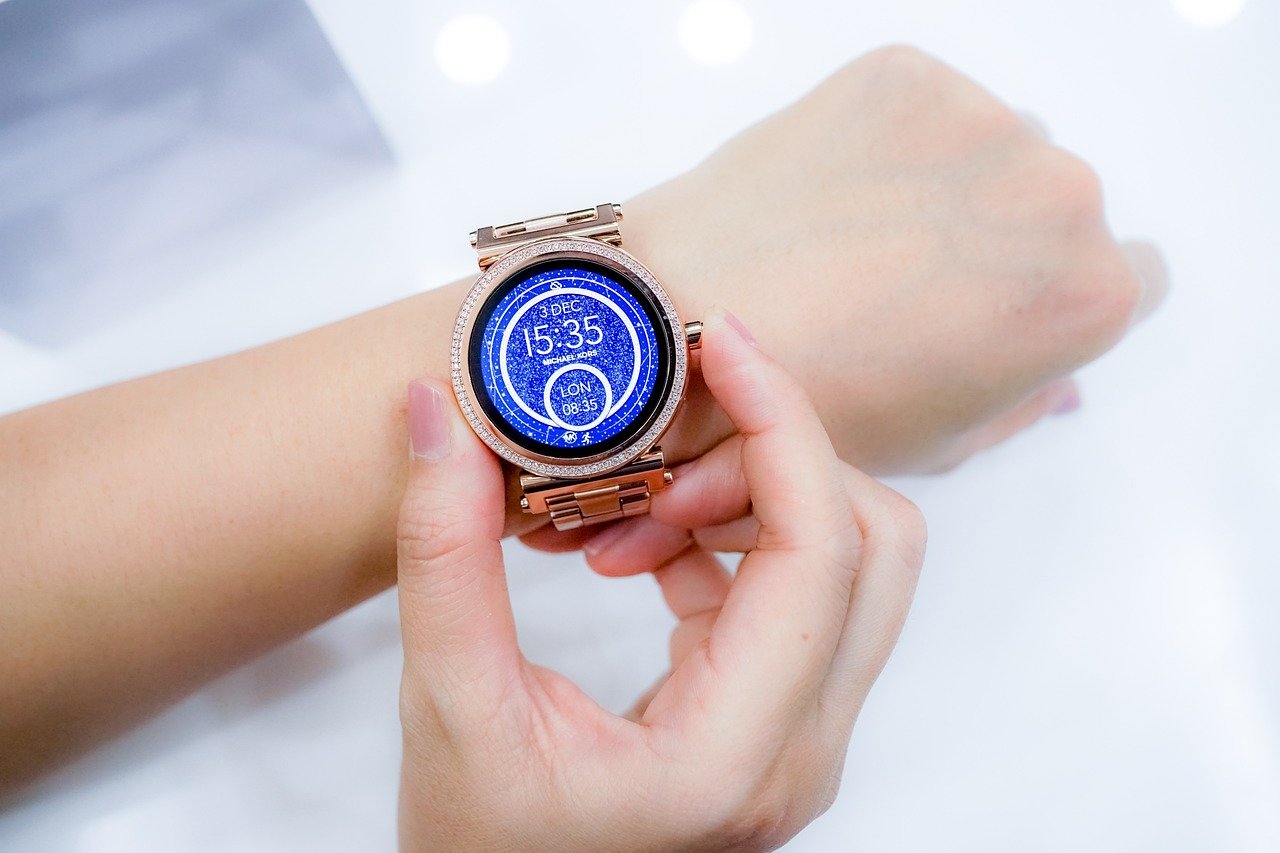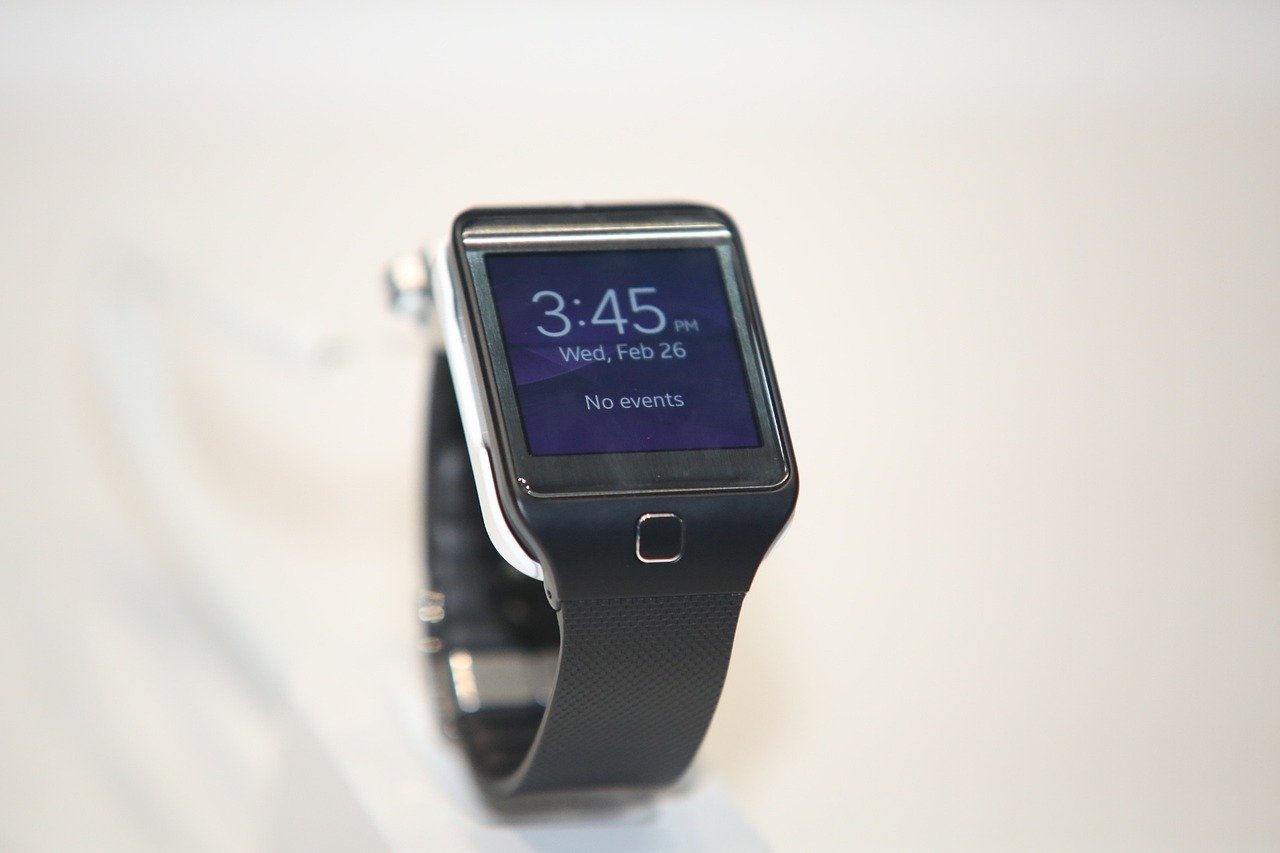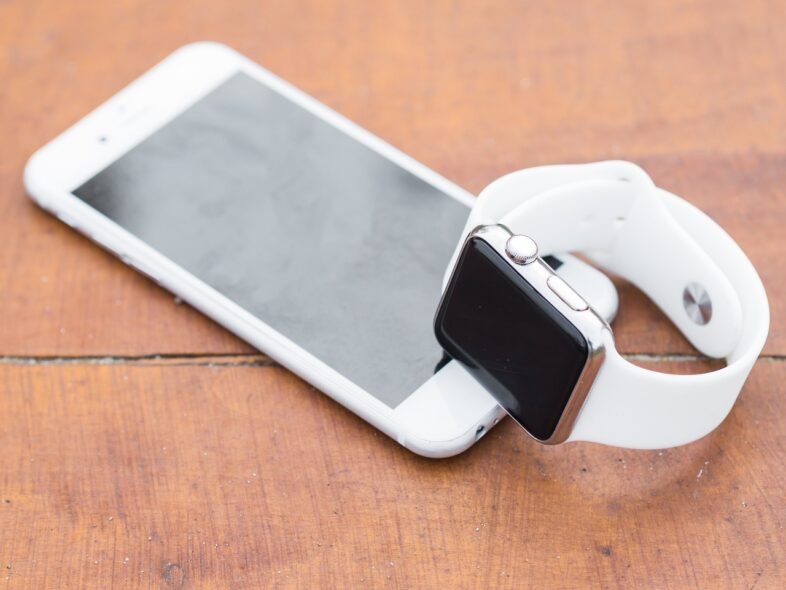Imagine being able to keep a watchful eye on your loved ones or belongings from the convenience of your smartwatch. With the rise in popularity of wireless video monitors, the question arises: can you view their feeds directly on a smartwatch? It’s an intriguing idea that promises remarkable convenience and peace of mind. In this article, we will explore the possibilities and limitations of connecting wireless video monitors to smartwatches, revealing a glimpse into the future of surveillance technology.

This image is property of pixabay.com.
How Wireless Video Monitors Work
Wireless video monitors have revolutionized the way we monitor our homes, loved ones, and belongings. These devices utilize wireless technology to transmit video feeds from the camera to a viewing device, removing the need for cumbersome cables and providing us with the convenience of monitoring from anywhere within the signal range.
Overview of Wireless Video Monitors
Wireless video monitors consist of two main components: a camera and a viewing device. The camera captures the video feed and wirelessly transmits it to the viewing device, which can be a smartphone, tablet, or even a smartwatch. This allows users to monitor the video feed in real-time, making it an excellent tool for home security, baby monitoring, and even pet surveillance.
Components of Wireless Video Monitors
The camera is the heart of a wireless video monitor system. It captures the video feed and ensures high-quality resolution for a clear and crisp image. Some cameras are equipped with night vision capabilities, enabling users to monitor their surroundings even in low light conditions. Additionally, many cameras come with built-in microphones to transmit audio alongside video, providing a comprehensive monitoring experience.
The viewing device is what enables us to view the video feed in real-time. The device can be a smartphone, tablet, or smartwatch. It receives the wireless transmission from the camera and displays the video feed on its screen. This allows the user to monitor the video feed from anywhere within the signal range, providing convenience and peace of mind.
Transmission of Video Feed
The video feed from the wireless camera is transmitted through various wireless technologies, such as Wi-Fi or Bluetooth. These technologies ensure a stable and secure connection between the camera and the viewing device, allowing for seamless live streaming of the video feed. The transmission range varies depending on the specific wireless technology used and can extend from a few meters to several hundred meters.
Smartwatches as Viewing Devices
Smartwatches have come a long way from being mere time-telling accessories. With advances in technology, smartwatches now offer a range of features that make them an ideal choice for viewing wireless video monitor feeds.
Evolution of Smartwatches
Smartwatches have evolved significantly over the years, transforming from basic wearable devices to sophisticated companions for daily life. Initially, smartwatches were limited to displaying notifications and tracking fitness activities. However, with advancements in processing power and display technology, modern smartwatches can now handle more complex tasks, such as streaming video feeds from wireless video monitors.
Features of Modern Smartwatches
Modern smartwatches come equipped with high-resolution displays that offer vibrant colors and sharp image quality. This ensures that the video feed from the wireless video monitor is displayed with clarity, allowing users to see every detail. Furthermore, smartwatches offer touch screen capabilities, making navigation through the video feed intuitive and user-friendly.
Compatibility with Video Monitors Wireless video monitors are compatible with a wide range of smartwatches, ensuring that users have options when it comes to choosing their preferred viewing device. Major smartwatch brands, such as Apple, Samsung, and Fitbit, offer models that are compatible with wireless video monitors. This compatibility is made possible through dedicated companion apps that allow seamless pairing and streaming of the video feed.
Wireless Video Monitor Compatibility
When considering viewing a wireless video monitor feed on a smartwatch, compatibility becomes a crucial factor. Understanding the available brands and models that support this functionality, as well as the operating system requirements and the pairing process, is necessary to ensure a smooth and hassle-free experience.
Available Brands and Models
Several major smartwatch brands offer models that are compatible with wireless video monitors. Apple’s Apple Watch, Samsung’s Galaxy Watch, and Fitbit’s Versa are popular choices that have proven compatibility with a variety of wireless video monitor systems. It is important to thoroughly research the specific model and brand of smartwatch to ensure compatibility with the wireless video monitor you intend to use.
Operating System Requirements
To ensure seamless integration with wireless video monitors, it is essential to consider the operating system requirements of the smartwatch. Smartwatches typically operate on either Apple’s watchOS, Samsung’s Tizen, or Google’s Wear OS. The companion app for the wireless video monitor must be compatible with the smartwatch’s operating system to establish a successful connection.
Pairing and Setup Process
To view the video feed from a wireless video monitor on a smartwatch, the two devices need to be properly paired and set up. The exact process may vary depending on the specific smartwatch and video monitor system being used. Generally, it involves downloading the companion app on the smartwatch, ensuring both devices are connected to the same Wi-Fi network, and following the on-screen prompts to complete the pairing process. Once paired, the smartwatch will be able to display the live video feed from the wireless video monitor.
Benefits of Viewing on a Smartwatch
Viewing a wireless video monitor’s feed on a smartwatch offers numerous benefits that enhance the overall monitoring experience. These benefits include portability and convenience, real-time monitoring at a glance, and a hands-free viewing experience.
Portability and Convenience
One of the main advantages of using a smartwatch as a viewing device is its portability. Smartwatches are lightweight and can be easily worn on the wrist, allowing users to monitor their surroundings without being tied down to a specific location. This portability offers convenience and flexibility, especially when performing daily activities or while on the go.
Real-Time Monitoring at a Glance
Another benefit of using a smartwatch to view wireless video monitor feeds is the ability to monitor in real-time at a glance. Smartwatches display notifications on the screen, making it effortless to see the video feed with just a quick glance at the wrist. This instant access to the video feed ensures that you never miss a moment and allows for prompt action if any concerning activity is observed.
Hands-Free Viewing Experience
Smartwatches can be paired with headphones or earbuds, providing a hands-free viewing experience. This is particularly useful in scenarios where users need to monitor a video feed while simultaneously engaging in other activities, such as working or exercising. With a smartwatch, you can keep an eye on the video feed without the need to hold a separate viewing device, providing increased convenience and productivity.

This image is property of pixabay.com.
Limitations and Considerations
While using a smartwatch as a viewing device for a wireless video monitor comes with several advantages, it is important to be aware of its limitations and considerations. These limitations include screen size and resolution, battery life and power consumption, and signal range and connectivity.
Screen Size and Resolution
One of the primary limitations of viewing a wireless video monitor’s feed on a smartwatch is the small screen size and limited resolution compared to larger devices such as smartphones or tablets. While smartwatches offer high-resolution displays, the small screen size may make it challenging to view details in the video feed, especially in complex or crowded environments.
Battery Life and Power Consumption
Smartwatches are known for their limited battery life, and streaming video feeds can significantly impact their power consumption. Continuous streaming of the video feed may drain the smartwatch’s battery quickly, limiting the amount of time it can be used for monitoring. Users should consider this limitation and ensure that they have sufficient battery life or access to charging options when relying on a smartwatch as a viewing device.
Signal Range and Connectivity
The wireless video monitor’s signal range and connectivity are also factors to consider. Smartwatches rely on a stable and strong wireless connection to receive the video feed. If the smartwatch moves out of the range of the wireless video monitor, the video feed may become unstable or disconnected. Users should be mindful of the signal range limitations to ensure consistent monitoring and avoid potential interruptions.
Compatibility Troubleshooting
Despite the advancements in technology, compatibility issues may arise when attempting to view a wireless video monitor’s feed on a smartwatch. These issues can range from problems with the video stream to pairing and connection difficulties. Familiarizing yourself with common troubleshooting steps can help address these issues effectively.
Issues with Video Stream
If you encounter issues with the video stream on your smartwatch, there are several troubleshooting steps to consider. Firstly, ensure that the wireless video monitor is functioning properly and that the camera has a stable internet connection. Additionally, verify that the smartwatch is properly paired with the video monitor and that both devices are connected to the same network. Restarting both the smartwatch and the video monitor system can also help resolve any temporary issues.
Pairing and Connection Problems
If you experience difficulties with the pairing or connection process, it is essential to review the instructions provided by the wireless video monitor and smartwatch manufacturers carefully. Ensure that the companion app is installed correctly and that the smartwatch is within the signal range of the video monitor. Additionally, confirming that both devices are using the latest firmware or software versions can help address any compatibility issues.
Firmware and Software Updates
Keeping the smartwatch’s firmware and the companion app up to date is crucial for maintaining compatibility and resolving potential issues. Manufacturers often release firmware or software updates that address bugs, improve performance, and introduce new features. Regularly checking for and installing these updates can help ensure a smoother and more stable viewing experience.

This image is property of pixabay.com.
Popular Wireless Video Monitor Brands
When considering wireless video monitors, several popular brands offer reliable and feature-rich options. These brands have established themselves as leaders in the industry, providing users with high-quality video feeds and user-friendly interfaces.
Brand A
Brand A is known for its exceptional video quality and feature-packed wireless video monitor systems. Their cameras offer high-resolution feeds with impressive clarity, making it easy to monitor activities in various environments. Brand A’s companion app is compatible with a wide range of smartwatches, providing users with flexibility in choosing their viewing device.
Brand B
Brand B specializes in wireless video monitor systems designed specifically for home security. Their cameras come equipped with advanced motion detection technology and secure cloud storage options, ensuring users can easily monitor their homes and receive alerts for any suspicious activity. Brand B’s companion app is compatible with several popular smartwatch models, allowing for convenient monitoring on the go.
Brand C
Brand C focuses on providing wireless video monitor systems for baby monitoring. Their cameras are equipped with features such as two-way audio and remote pan and tilt, allowing parents to keep an eye on their little ones from any room in the house. Brand C’s companion app is designed with user-friendliness in mind and is compatible with various smartwatches, offering parents a convenient and quick way to monitor their babies.
Steps to View Video Monitor’s Feed on a Smartwatch
To view a video monitor’s feed on a smartwatch, a series of steps must be followed to ensure proper setup and seamless connectivity. These steps involve ensuring compatibility requirements, pairing the video monitor with the smartwatch, installing and configuring the companion app, and finally, accessing the live video feed on the smartwatch.
Step 1: Ensure Devices Meet Compatibility Requirements
Before attempting to view the video monitor’s feed on a smartwatch, it is crucial to check if both devices meet the compatibility requirements. Ensure that the smartwatch is listed as compatible with the specific video monitor brand and model. Additionally, confirm that the smartwatch’s operating system is supported by the companion app.
Step 2: Pair the Video Monitor with the Smartwatch
To establish a connection between the video monitor and the smartwatch, the two devices need to be properly paired. Follow the instructions provided by the video monitor manufacturer to enable pairing mode on the camera. On the smartwatch, navigate to the settings menu and search for available devices to pair with. Select the video monitor from the list and follow the on-screen prompts to complete the pairing process.
Step 3: Install and Configure the Companion App
To enable the smartwatch to receive the video feed from the wireless video monitor, the companion app must be installed and configured. Visit the app store specific to the smartwatch’s operating system and search for the companion app provided by the video monitor’s manufacturer. Download and install the app on the smartwatch, and then follow the app’s on-screen instructions to configure settings and establish a connection with the video monitor.
Step 4: Access the Video Feed on the Smartwatch
Once the pairing and app setup process is complete, the smartwatch will be able to access the live video feed from the wireless video monitor. Open the companion app on the smartwatch and navigate to the video feed section. The live feed should now be displayed on the smartwatch’s screen, allowing for real-time monitoring from the convenience of the wrist.
Best Practices for Optimal Viewing
To ensure an optimal viewing experience while using a smartwatch to monitor a wireless video feed, several best practices should be followed. These practices include the positioning of the video monitor, adjusting smartwatch display settings, and considering network and connectivity factors.
Positioning of Video Monitor
The positioning of the wireless video monitor is crucial to capture the desired viewing area effectively. Place the camera in a location that provides a clear and unobstructed view of the area you wish to monitor. Consider factors such as the camera’s field of view and any potential obstructions that may affect the quality of the video feed, such as walls or furniture.
Smartwatch Display Settings
To optimize the video viewing experience on the smartwatch, adjust the display settings accordingly. Increase the brightness to ensure a clear and visible image, especially when monitoring in low-light conditions. Additionally, adjust the screen timeout settings to prevent the display from turning off during extended monitoring sessions.
Network and Connectivity Considerations
A stable and secure wireless network connection is vital for uninterrupted video streaming to the smartwatch. Ensure that both the smartwatch and the wireless video monitor are connected to the same Wi-Fi network for optimal performance. Consider the range and signal strength of the Wi-Fi network to avoid signal drops or connectivity issues. If possible, position the smartwatch within a reasonable range of the Wi-Fi router to maintain a strong and stable connection.
Conclusion
The ability to view a wireless video monitor’s feed on a smartwatch has transformed the way we monitor our surroundings. With the convenience and portability of smartwatches, users can now monitor their homes, loved ones, and belongings with ease. Advances in technology have made it possible for smartwatches to display high-quality video feeds, ensuring that every detail is captured and visible on the wrist.
Choosing the right wireless video monitor system and smartwatch is essential to create a seamless and compatible setup. Consider the available brands and models, operating system requirements, and the pairing process to ensure a smooth connection between the video monitor and the smartwatch. Additionally, be aware of the limitations and considerations, such as screen size and resolution, battery life, and signal range, to make an informed decision.
By following the steps to view a video monitor’s feed on a smartwatch and implementing best practices for optimal viewing, users can harness the full potential of this innovative technology. The combination of wireless video monitors and smartwatches offers a convenient, real-time monitoring solution that brings peace of mind to users and enhances their overall monitoring experience.

Meet Penny Sterling, the editor behind the captivating content of our blog, “Wireless Video Monitor.” With a background in electrical engineering and a deep passion for technology, Penny has become a leading authority in the world of wireless video monitors. Her ability to distill complex concepts into accessible articles has made her a trusted guide for both tech enthusiasts and newcomers to the field. Penny’s unwavering commitment to research and staying up-to-date ensures that “Wireless Video Monitor” remains an authoritative source for reliable information. Get ready to embark on a journey of wireless video monitor exploration with Penny Sterling as your knowledgeable and dedicated mentor.


